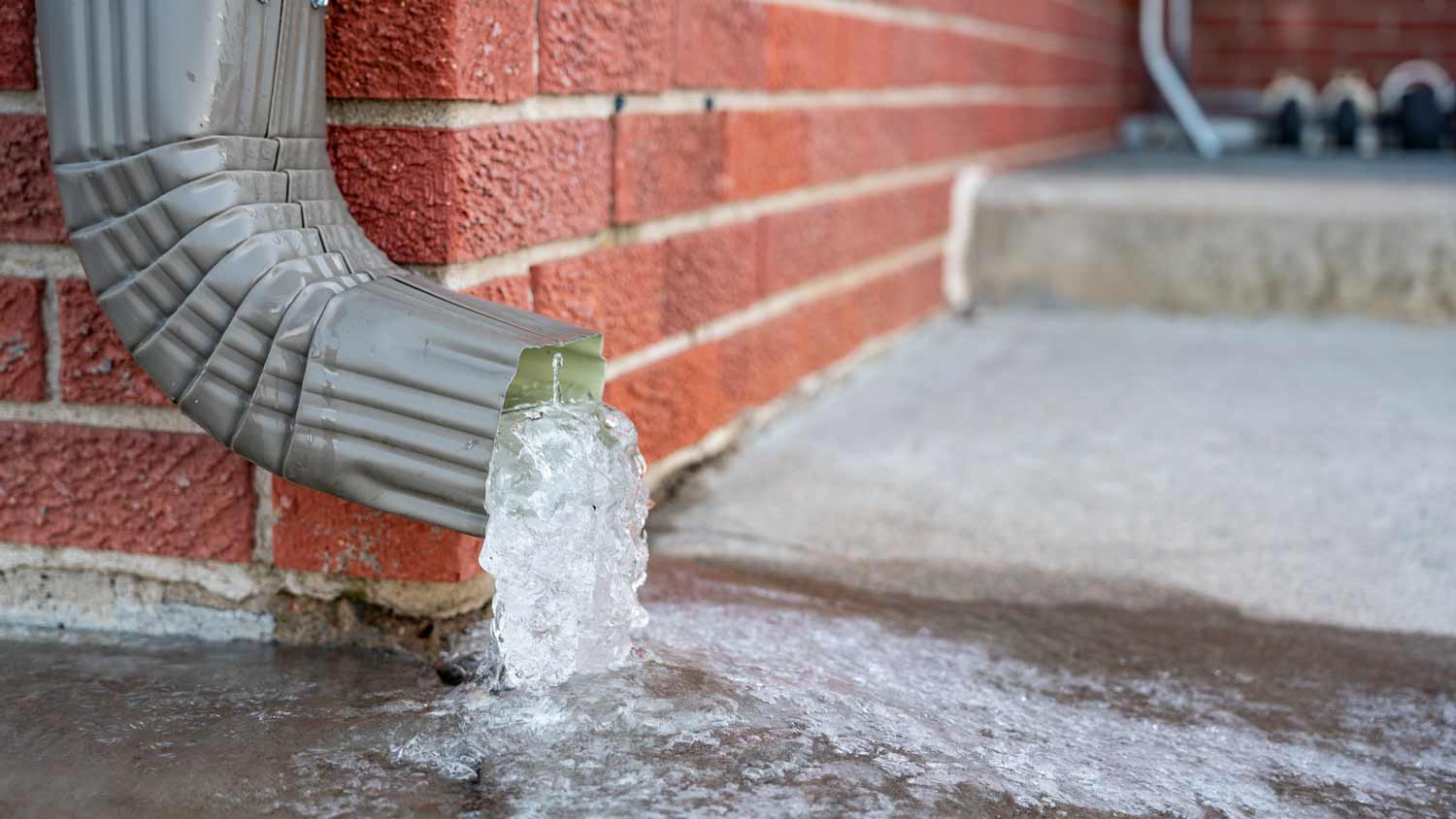
Fire damage restoration costs vary widely based on the extent of the damage. Learn how to assess your home and estimate your total after a fire.
Don’t leave your foundation soaked in water


Standing water can cause constant pressure and uneven stress to your foundation.
Standing water can be caused by plumbing issues, damaged foundation, or loss of surrounding soil.
Water damage restoration costs $500 to $50,000, with average projects costing around $4,300.
Cement foundation repair costs from $2,160 to $7,790.
Was your basement flooded? While your foundation may sound indestructible, it isn’t nearly as resistant as you may think it to be. Sitting in water for too long can cause foundation damage that threatens your home’s structural integrity. Know the risk of standing water in and around your foundation and what you can do to keep your foundation healthy.
There are many reasons why your foundation is soaking in water. In-house leakage and ground-level flooding are the main reasons water might pile in your foundation, whereas a clogged drain will prevent water from existing promptly. Even if the foundation itself isn’t damaged, water can still gather around from soil loss, improper landscaping, and poorly designed drainage and gutter systems.
The low-point drain directs water away from your home and into the streets. If that drain is clogged, you may notice standing water in your crawl space. If you have easy access to the drain, you may even find it completely submerged in water. Clogging often happens if your low-point drain does not have a filter to catch and remove debris or if the filter hasn’t been cleaned for a while.
Leaking pipes are another reason why you may have standing water in your foundation. Turn on the water in your home and see if you notice any visible leaks. If you believe a hidden pipe behind the wall is the culprit behind the standing water, contact a plumber for an inspection.
Do you have a concrete foundation? If so, cracks on the surface are often a telltale sign of water damaged concrete, often caused by standing water behind the foundation walls. Even if the cracks are caused by other factors, they also allow water to enter your basement or crawl space more easily, creating room for standing water to form on the inside.
If your downspouts aren’t directed far away enough from the foundation, they will gradually wash away the soil around the base of your house, causing standing water to form. Inefficient drainage systems in heavy rain areas are another reason your foundation may be standing in water. Poorly designed landscaping, such as flowerbeds or rain gardens located too close to the foundation, is another main cause of foundation water damage.
Both also lead to exposed dirt in your crawl space, which will cause moisture to enter your home as the dirt gradually rises higher. This will lead to significant condensation and water pooling.
It’s important to catch water damage early. The most common signs that indicate you have a moisture problem are rotting, buckling, or peeling surfaces, which show up in 31% of cases. Damp or wet areas are also common indicators at 26.5%. Some homeowners notice stains, discoloration, or odors that suggest water damage.
While the standing water around your foundation may be difficult to notice, you can pay attention to the signs of basement water damage instead to address any potential problems on your foundation promptly.
Mold and mildew are among the most obvious and severe signs of water damage. Left untreated, mold can spread throughout your house, causing wood rot, structural damage, and significant health risks.
If you see cracks on your basement walls or floors, the concrete might have too much moisture. Even if the cracks aren’t caused by direct water damage, since they compromise your foundation’s structural integrity, they also create more chances for water damage. Therefore, you should address any cracks as soon as you notice them.
If you notice visible moisture in your basement or crawl space, there’s a high chance that standing water is present around your foundation. If you don’t see condensation, try to touch the wall and see if you can feel any moisture. Normally, your basement or crawl space should feel nice and dry.
Water damaged cement tends to show stains or discoloration. If your basement is painted, pay attention to peeling or bubbling paint. If your basement is laminated, water damage to the foundation will lead to delamination. These are all important visual signs warning you about potential water damage to the foundation.
A musty smell is a telltale sign of water damage and standing water. Pay attention to where the smell originates. If the smell is the worst in your basement, there is likely water damage to your foundation or standing water somewhere around.
Don’t think clearing your basement of recent flooding marks the end of your work because standing water can damage your foundation in various ways. Additionally, standing water outside your foundation can also cause structural damage.
While standing water gathered around your foundation may evaporate during summer, the constant cycle of water cumulation and evaporation puts pressure on your foundation’s structure. It will eventually cause your concrete to deteriorate. This could lead to expensive foundation repairs.
Water flows from high to low. As a result, standing water puts uneven stress on your foundation, depending on soil distribution and sloping. Left unattended, this could lead to horizontal fissures in your foundation, which are parallel cracks running horizontally to the ground across walls.
Eventually, standing water will find its way through your foundation and into the rest of your home’s structure, resulting in much more severe damages and much more expensive repairs.

There are a few useful ways you can prevent future water damage to your foundation.
Adding a sump pump can be a great idea if you have a rock basement designed to let water in. This lets you quickly remove any standing water before real damage can be done. Sump pumps also work in concrete foundations, although it is best for you to address the root cause of standing water if your foundation is made of concrete.
Make sure your downspouts are directed away from your foundation. In some cases, you may need to do a downspout extension. If the downspouts are pointed toward the foundation or the ending point is too close to your property, the water will gradually wash away the soil around your foundation, allowing standing water to gather and begin to damage your foundation.
If you live in a heavy rain area, you can also add some additional drainage systems to prevent standing water from gathering. French drains and extending trenches connecting to the downspouts are both great options.
If your budget allows, consider waterproofing your foundation. There are a few different ways to waterproof your basement, including vapor barriers, waterproofing sealant, bentonite clay, etc. Vapor barriers are the most affordable option, costing as low as $0.50 to $0.70 per square foot, and can be installed inside and outside your home.
Water damage to the foundation is a complicated matter, and if you want to fix the problem once and for all, you must address the root cause of the standing water.
If you believe a leaking pipe or clogged drain is causing standing water in your foundation, contact a plumber. Drain inspection and underground pipe access require professional knowledge and are best handled by a licensed and insured pro.
Contact a mold remediation company immediately if you notice mold in your basement or crawlspace. Mold can often grow inside the water damaged concrete or spread deeper into the rest of your house. A professional will be able to determine exactly how severe the situation is and thoroughly address the mold growth. The longer you wait, the more risks you pose to your health and safety.
If your basement was flooded, contact a water restoration company to remediate any damage. Water damage restoration costs $500 to $50,000, with average projects costing around $4,300.
There are a few crucial steps to water damage restoration that may save you big bucks. First, contact a reliable pro for an inspection, then contact your insurance company in case a claim is needed.
If water damage has caused your concrete foundation to shift, bulge, crack, or even shatter, you need to hire a foundation expert to repair or replace the damaged slabs. Foundation repair costs from $2,160 to $7,790. Some foundation experts can also help waterproof your basement.
While you can DIY additional drainage systems, it’s best to hire a professional. A French drain system with a sump pump costs $2,600 to $4,700 on average, whereas a yard grading drainage system costs about $0.80 to $2.00 per square foot.
From average costs to expert advice, get all the answers you need to get your job done.

Fire damage restoration costs vary widely based on the extent of the damage. Learn how to assess your home and estimate your total after a fire.

Need to get rid of lingering smoke odors in your home? Learn how much smoke remediation costs to budget accurately for this major undertaking.

Fixing a slab leak requires finding the leak, digging a trench, breaking the slab, pipe lining, and more. Keep reading to learn how to fix a slab leak.

Follow this simple guide to fix water-damaged wood furniture. You don’t always have to buy new ones.

Read about the most common signs of basement water damage, including water stains, mold growth, and foundation cracks, so you can prevent costly repairs.

The five primary types of wood rot are dry rot, wet rot, brown rot, white rot, and soft rot. Learn what causes them and how to identify them in your home.